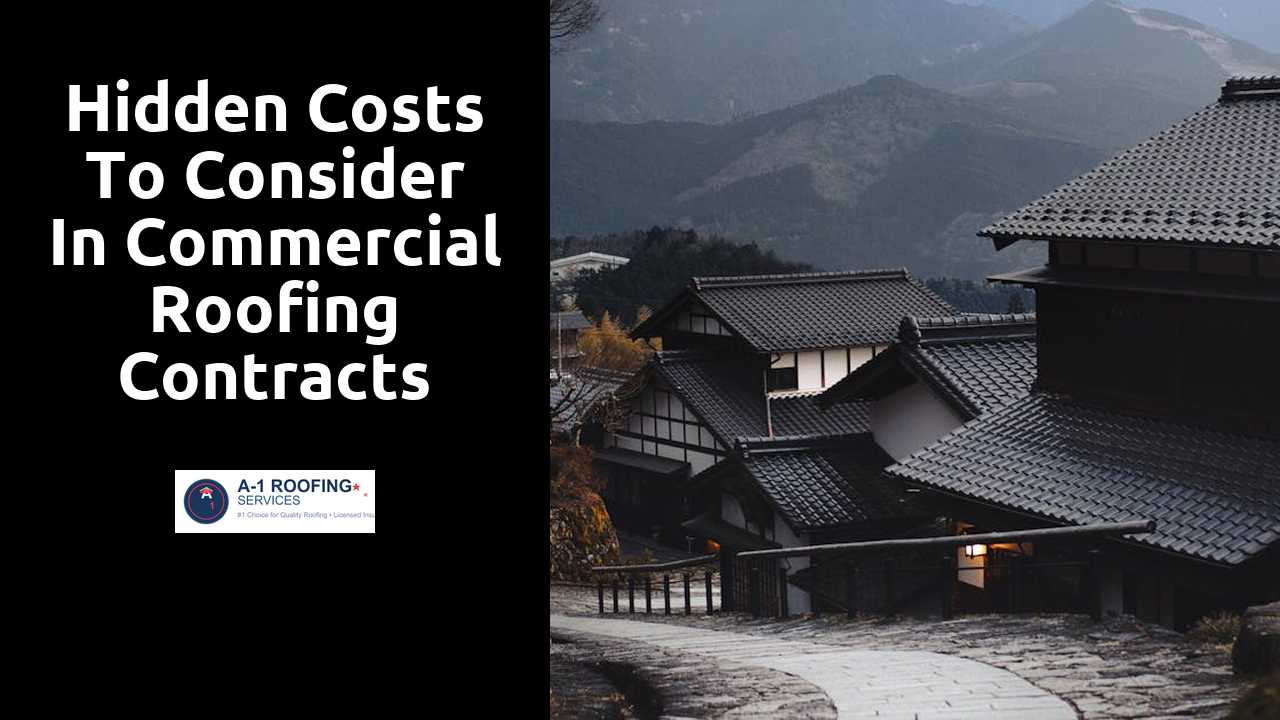
Hidden Costs to Consider in Commercial Roofing Contracts
Table Of Contents
Unexpected Damage and Repairs
In the realm of commercial roofing, unforeseen damage can lead to significant financial strain on businesses. Weather events, wear and tear, or even improper installation may result in issues that necessitate urgent repairs. It is crucial to account for these possibilities when evaluating potential costs associated with a roofing project. Being prepared for unexpected repairs may save property owners from larger financial burdens down the line.
Many contracts may not fully outline the extent of liability regarding these damages. A lack of clarity can leave property owners vulnerable to unforeseen expenses. Understanding the specific terms of damage repair clauses within the roofing contract is essential. This knowledge enables a more comprehensive assessment of potential financial obligations during the lifespan of the roof. Being proactive in discussions about these scenarios can lead to better-informed decisions.
Hop over here to discover more.
Preparing for the Unforeseen
When it comes to commercial roofing contracts, preparing for unexpected issues is crucial. It is advisable to include a contingency plan within your budget. This allows for flexibility in handling unforeseen complications that may arise during the roofing project. Factors such as severe weather, hidden structural damage, or delays in material delivery can quickly escalate costs. Ensuring that the contract addresses these possibilities provides an added layer of protection.
Additionally, clear communication with the roofing contractor is essential. Discuss potential risks and how they might be managed. Having a transparent dialogue helps establish a mutual understanding of what could occur during the roofing process. It also fosters trust between the property owner and the contractor, lowering the likelihood of disputes later on. By planning for these uncertainties, you safeguard your investment and streamline project execution.
Warranty Considerations
Understanding the specific coverage provided by warranties is essential when evaluating commercial roofing contracts. Many warranties have stipulations that can limit the scope of coverage, such as requirements for regular maintenance or restrictions on the types of materials that can be used for repairs. Failing to meet these conditions can void the warranty, leaving the property owner vulnerable to significant repair costs.
It's also crucial to recognize the difference between manufacturer warranties and contractor warranties. Manufacturer warranties typically cover defects in materials, while contractor warranties often focus on workmanship. Evaluating both types can help in identifying potential gaps in coverage, which can lead to unforeseen expenses should issues arise. Property owners should clarify the terms of all warranties before signing a contract to ensure they fully understand their rights and responsibilities.
What to Know About Coverage Limits
Understanding the specifics of coverage limits in your commercial roofing warranty is essential for making an informed decision. These limits dictate the extent of the manufacturer’s liability in case of defects or issues that may arise after installation. It is crucial to read the fine print carefully, as certain warranties may only cover specific types of damage or may have exclusions for certain weather conditions. Familiarizing yourself with these stipulations will help you gauge the financial protection available against unforeseen problems.
Some warranties also feature varying coverage durations for different components of the roofing system. For example, materials might have a longer warranty period compared to labor, which could lead to unexpected out-of-pocket expenses if repairs are needed after the initial guarantee has expired. Being aware of these nuances can help you plan better for potential future costs and ensure that your roofing investment provides stable protection throughout its lifecycle.
Maintenance and Upkeep Costs
Regular maintenance is crucial for prolonging the lifespan of a commercial roof. Over time, factors such as weather conditions and environmental exposure can lead to wear and tear. Establishing a routine maintenance schedule can mitigate potential issues. Addressing small repairs promptly can prevent more significant damage down the line. It is essential to budget for these ongoing costs to avoid financial surprises later.
In addition to routine upkeep, unexpected repairs may arise due to severe weather events or other unforeseen circumstances. Business owners should factor these potential expenses into their financial planning. Accumulating maintenance costs can significantly impact a company's budget over the long term. By accounting for both scheduled and unscheduled maintenance, a comprehensive financial strategy can help ensure a roof’s reliability and performance throughout its intended lifespan.
Long-term Financial Implications
The decision to invest in a commercial roofing system extends beyond the initial expenditure. Long-term financial implications often reveal themselves through operational costs associated with maintenance, repairs, and insurance. A poorly installed roof can lead to frequent leaks and damage to the structure beneath, increasing the overall maintenance budget. Understanding these potential pitfalls is crucial for making an informed decision that protects both your property and financial investment.
Considering durability and lifespan plays a significant role in long-term planning. Materials with a higher upfront cost may offer better resilience and require less frequent replacement, ultimately saving money over time. In contrast, opting for cheaper alternatives may lead to ongoing expenses that negate initial savings. Evaluating the long-term performance of materials and workmanship should be a pivotal part of the decision-making process to ensure sustainable financial health for your property.
Related Links
Cost Comparison: Traditional Roofing vs. Modern SolutionsThe Impact of Roof Size on Commercial Roofing Budgets